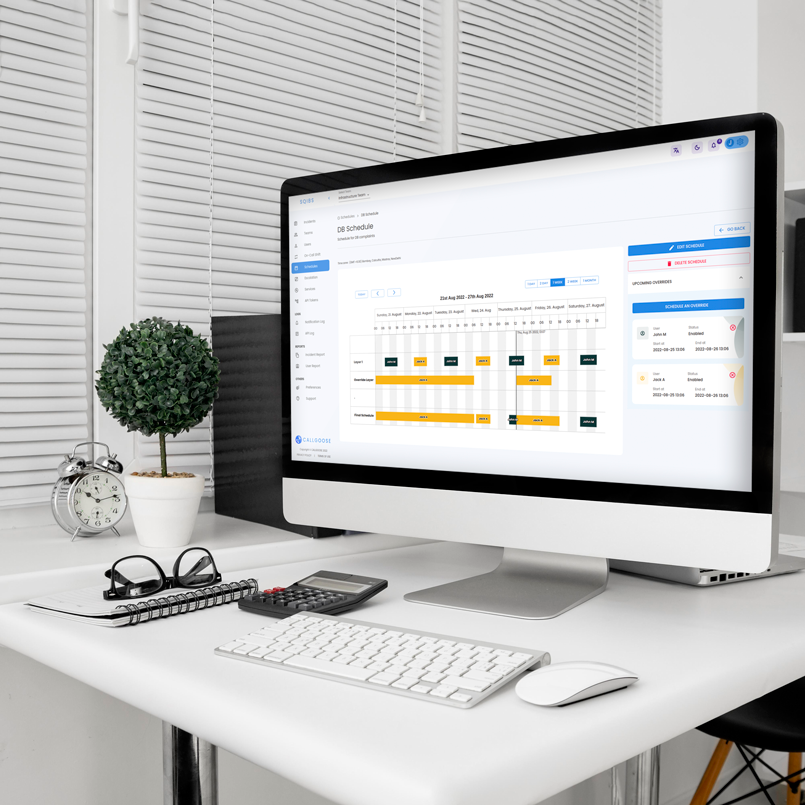
CALLGOOSE

CALLGOOSE
BLOG
13 September 2024 | Amelia Gaby
5 Minute Read
In today's digital landscape, IT teams face the ongoing challenge of managing and monitoring complex systems. One significant issue that disrupts operational efficiency is alert noise. This excessive generation of unactionable alerts from various sources—such as applications, servers, and network devices—can lead to alert fatigue. When IT teams are overwhelmed with a high volume of alerts, their ability to prioritize and respond to critical incidents diminishes. This issue is particularly problematic during scheduled maintenance, a routine yet vital activity in IT operations.
Scheduled maintenance is a cornerstone of maintaining system health and ensuring operational continuity. However, it often triggers non-critical alerts that can obscure real-time, actionable issues. Effectively managing these alerts is essential for IT teams, especially when operational continuity is non-negotiable. This blog will explore strategies to suppress alert noise during scheduled maintenance and how platforms like Callgoose SQIBS can streamline this process, ensuring efficient IT operations.
Scheduled maintenance, while necessary for long-term system health, frequently generates a flood of alerts from production servers, applications, and network devices. These alerts typically signal temporary disruptions but do not require immediate action, creating unnecessary noise for IT teams. The inability to filter these alerts can lead to distraction and missed opportunities to address critical incidents in real time.
Consider the following scenarios that highlight the challenges of alert noise during maintenance windows:
Callgoose SQIBS offers a comprehensive feature set to manage alert noise during scheduled maintenance effectively. Its incident management platform gives IT teams full control over each service, ensuring minimal disruption during maintenance windows. Key features include:
Service Special Operations:
Maintenance Tags:
Filtering Alerts:
The filtering process works as follows:
For more information on how to use maintenance mode and tag-based filtering, you can refer to Callgoose SQIBS Maintenance Mode Documentation.
One of the standout features of Callgoose SQIBS is its ability to integrate with all monitoring and observability tools, serving as a centralized hub for alert management. This eliminates the need for IT teams to log into each individual monitoring tool to manage alerts manually. Instead, all alerts related to scheduled maintenance can be controlled directly from Callgoose SQIBS. This centralized control significantly reduces the administrative burden on IT teams, ensuring focus remains on mission-critical activities.
Use Cases for Suppressing Alerts
By leveraging the Callgoose SQIBS platform, IT teams can go beyond alert suppression to establish robust incident auto-remediation workflows. The platform integrates powerful automation features, allowing for process automation, runbook automation, and IT request automation. With event-driven automation, organizations can enhance their responsiveness and reliability during both routine operations and maintenance windows.
Additionally, Callgoose SQIBS provides on-call scheduling, real-time incident management, and incident response capabilities. With its seamless integration with popular communication tools like Slack and Microsoft Teams, Callgoose SQIBS empowers teams to resolve incidents efficiently, ensuring systems remain available and responsive.
Gain exclusive insights! Watch our videos
watch Callgoose SQIBS video now!
Watch Callgoose SQIBS Process Automation video now!
Watch Callgoose SQIBS Runbook Automation (RBA) video now!
In conclusion, Callgoose SQIBS is a cutting-edge automation platform that elevates your organization’s resilience, operational efficiency, and alert management capabilities. Whether suppressing alert noise during scheduled maintenance or automating incident resolution, it offers a centralized, robust solution for IT teams committed to operational excellence.
For more information on how to use maintenance mode and tag-based filtering, you can refer to Callgoose SQIBS Maintenance Mode Documentation.
Callgoose SQIBS is a cutting-edge automation platform designed to elevate your organization’s resilience, reliability, and operational efficiency. With powerful On-Call scheduling, real-time Incident Management, and Incident Response capabilities, it ensures your systems are always on and responsive. Whether you need Process Automation, Runbook Automation, Incident Auto-remediation, IT request automation, or Event-Driven Automation, Callgoose SQIBS empowers you with comprehensive solutions. Stay connected and in control with notifications via Mobile App (Android, iPhone), Email, SMS, Phone Calls in over 30+ languages across 200+ countries, and seamless integrations with Slack & Microsoft Teams. Empower your team to trigger, acknowledge, and resolve incidents directly from Slack & Microsoft Teams.
Refer to Callgoose SQIBS Incident Management and Callgoose SQIBS Automation for more details

CALLGOOSE
SQIBS
Advanced Automation platform with effective On-Call schedule, real-time Incident Management and Incident Response capabilities that keep your organization more resilient, reliable, and always on
Callgoose SQIBS can Integrate with any applications or tools you use. It can be monitoring, ticketing, ITSM, log management, error tracking, ChatOps, collaboration tools or any applications
Callgoose providing the Plans with Unique features and advanced features for every business needs at the most affordable price.
Unique Features